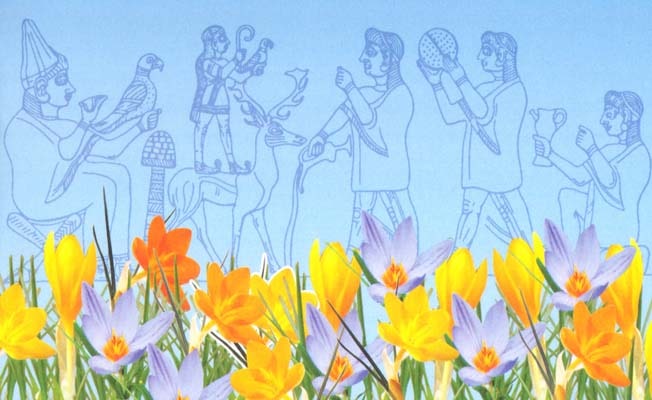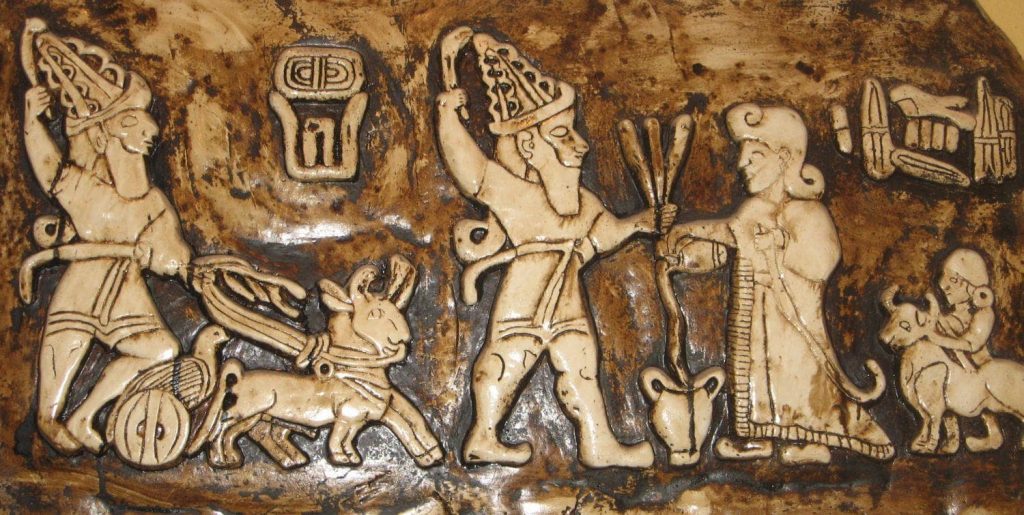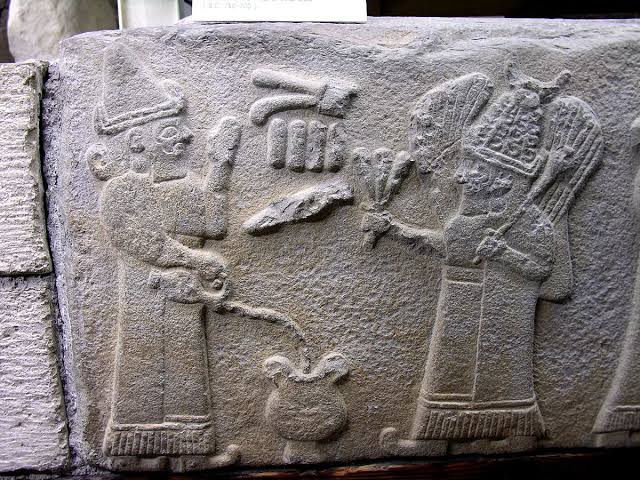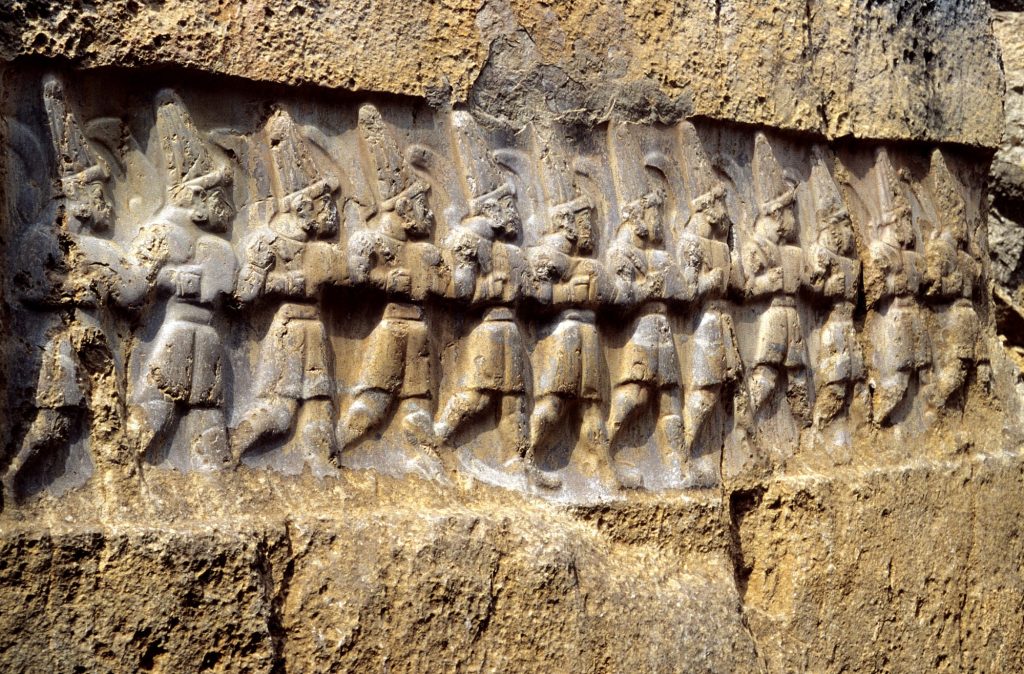
The arrival of spring in the Hittites was celebrated with the Purilli Festival
Spring is a season of abundance, fertility, and the beginning of new lives for humans, and it is a season with many meanings. Therefore; the arrival of spring was welcomed with celebrations, feasts and sacrificial ceremonies.
Celebrations differed according to the geography of the people. Each society celebrated the arrival of spring according to its own cultural values.
The Hittites were a society that celebrated the arrival of spring. The Hittites welcomed the spring with the feast they called Purilli. Purilli Feast is known as a feast that includes meticulous rituals directed by the king.
It was very important for the Hittites not to anger the gods
The Hittites, the owners of the state of a thousand gods, are remarkable for the multiplicity and diversity of their gods and the accompanying festivals. The Hittite pantheon was so numerous and varied because the Hittite state honored and respected the gods of the states they conquered in addition to their own gods (fearing the wrath of the gods).

Most of the tablets in the archive room of the Great Temple unearthed in the capital city of Hattusa are religious texts. The duties of many people who served the gods, especially the priestly class, other temple officials, bread makers, servants responsible for offerings, musicians, jesters, and how to behave during rituals were meticulously written on these tablets.
Because the Hittites believed that the slightest mistake in the worship of the gods and religious celebrations would incur the wrath of the gods. The wrath of the gods would bring epidemics, famine and defeat in wars to Hatti lands.
The worship of the gods and religious festivals, which were so essential for the Hittites, were held with the personal participation of the king and queen, who were the high priests. The king issued regulations to ensure that religious festivals were celebrated without the slightest disruption and followed up on them.
Purilli Festival celebrating the arrival of spring
We have said that all gods and festivals were important for the Hittites. But there is one holiday that has a special importance for the Hittites. The name of this holiday is Purilli Spring Festival.

The Hittite economy was based on agriculture and animal husbandry. The revival and fertile awakening of nature was very important for the Hittites. Especially the Storm God Teşup and his son Telipinu, the God of the Prairie, had to be pleased at the time of the arrival of spring. Especially Telipinu should not be angered. If Telipinu was angered, nature would be offended, sheep would not lamb, fields, vineyards, gardens and houses would be shrouded in fog.
So much so that the Hittites have passed on to us an incident that happened with the story of the Disappearing God Telipinu.
Spring is a common period for every culture. With the arrival of spring, the sun increases its light and warmth. Nature wakes up. Fields, vineyards and gardens come to life. Animals become pregnant.
A good spring means that the fear of hunger is overcome for human beings and that the year passes without fear, in joy and abundance.
Nevruz, celebrated in Anatolia on March 21, is a product of these ancient traditions. As the name suggests, Nevruz is the equinox, the turning point where new, beautiful and positive energies emerge.
The Hittites celebrated Nevruz with the name Purilli. Purulli(ya) comes from the Hattian word pur-. Purilli has meanings such as “earth, place, country”. In cuneiform tablets, the word appears as puruli-, purulli-, ṷuurulli-, puruliš-, ṷurulliya-, purulliya-, purulliyan, purulliyaš.
In the Hurri language, it also has meanings such as “house, temple”. However, it is not known whether this word is related to the Hittite feast of Purulli in Hurri society.
The Feast of Purilli was celebrated under the high priesthood of the Hittite king, just like every other feast. It is known from the tablets in the archives that magnificent ceremonies were organized in the capital city of Hattusa for the Feast of Purilli.

According to V. Haas, the episode in which the king was accepted by the gods, which we can call the highest point of the feast rituals, took place in the city of Nerik, so it is also known as the “purulli(ya) ritual of the city of Nerik”.
Again according to V. Haas; since there was no binding innovation during the Hittite Empire period, various parts of the feast were included in the AN.TAḪ.ŠUMSAR Feast. The feast was divided into 9 years. According to the archival catalog of Nerik’s purulli(ya) feast (KUB 30.42 stories I 5-6)76, the feast consisted of 32 tablets, but none of these tablets have survived.
Since the sources differ temporally, the duration of the feast is averaged by reconstruction. Accordingly, V. Haas suggests that the entire feast lasted approximately one month.
The king started his journey for the feast ceremony from Ḫattuša, the unchanged main point, then stopped at Taṷiniya and Ṷarkataṷi, from there to Zippalanda, to Arinna, although there is no definite transit route, and after Kaštama to Nerik.
Source: Tercan, Betül, “HITITLERDE PURULLI(YA) BAYRAMI” Unpublished Master’s Thesis, Ankara.
You may also like
- A 1700-year-old statue of Pan unearthed during the excavations at Polyeuktos in İstanbul
- The granary was found in the ancient city of Sebaste, founded by the first Roman emperor Augustus
- Donalar Kale Kapı Rock Tomb or Donalar Rock Tomb
- Theater emerges as works continue in ancient city of Perinthos
- Urartian King Argishti’s bronze shield revealed the name of an unknown country
- The religious center of Lycia, the ancient city of Letoon
- Who were the Luwians?
- A new study brings a fresh perspective on the Anatolian origin of the Indo-European languages
- Perhaps the oldest thermal treatment center in the world, which has been in continuous use for 2000 years -Basilica Therma Roman Bath or King’s Daughter-
- The largest synagogue of the ancient world, located in the ancient city of Sardis, is being restored











Leave a Reply